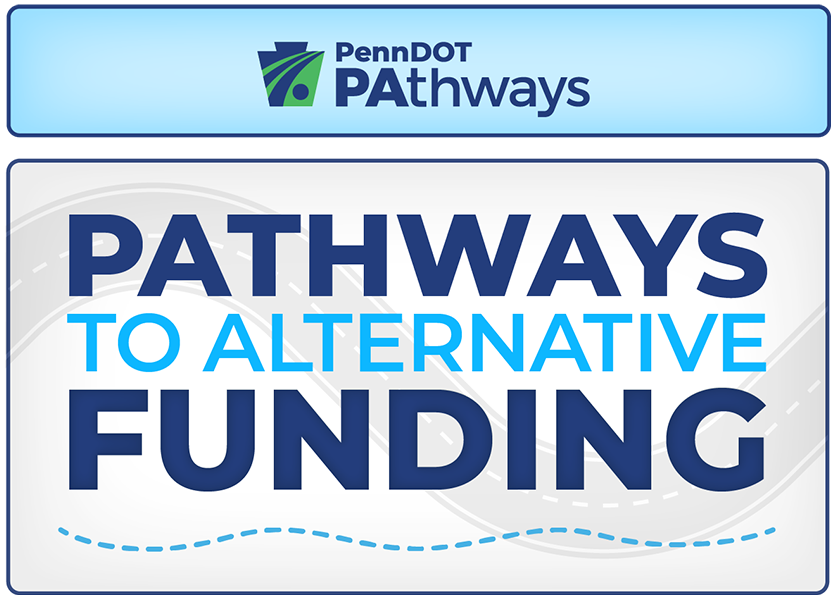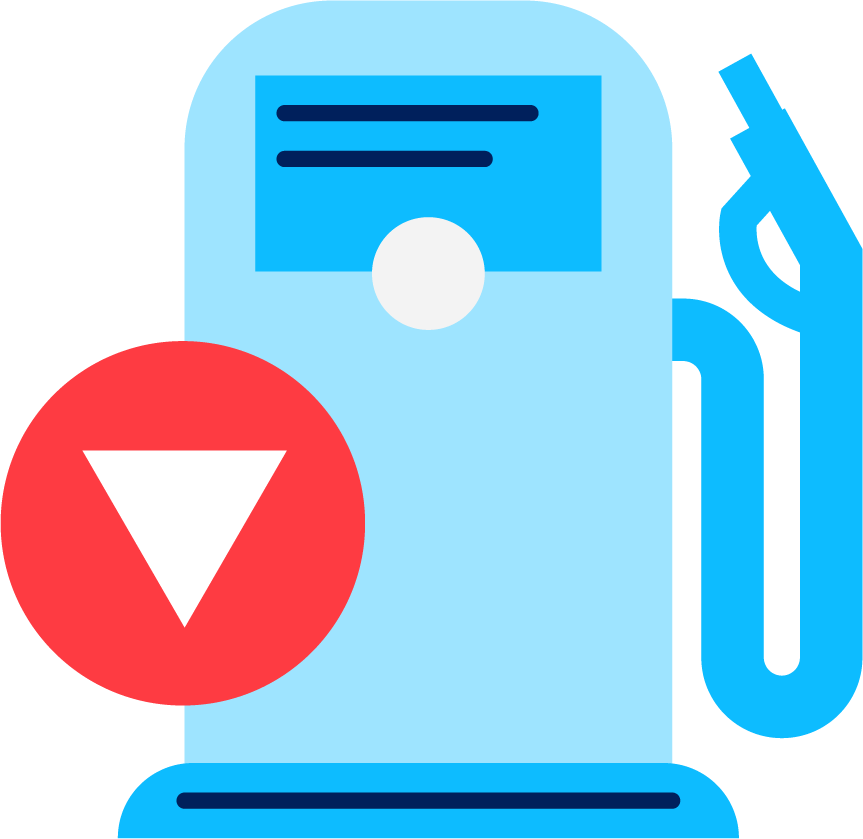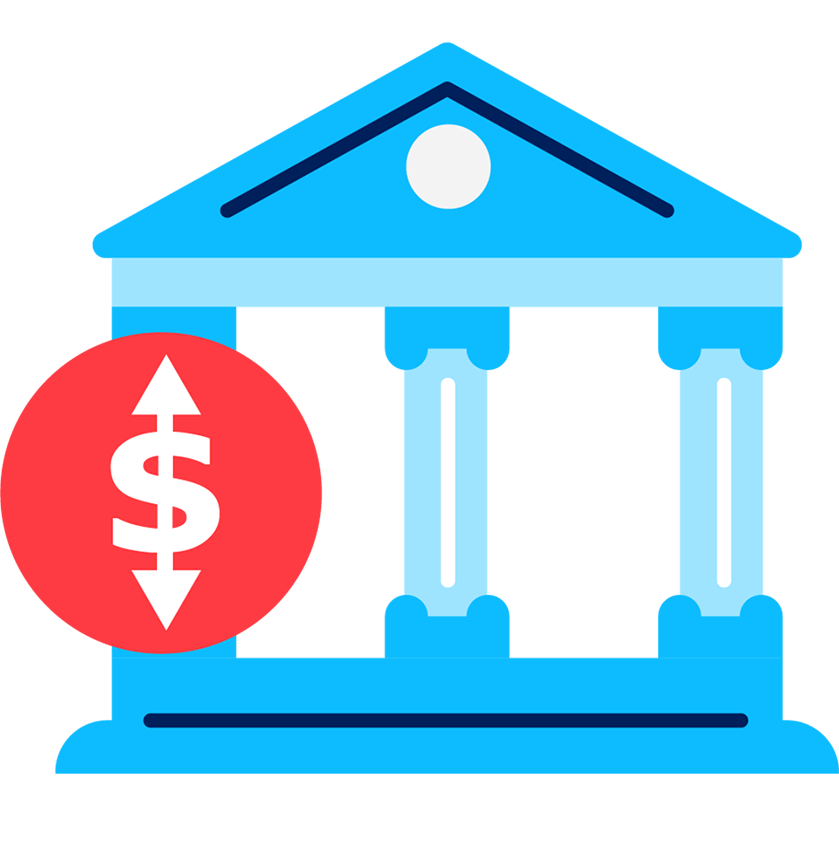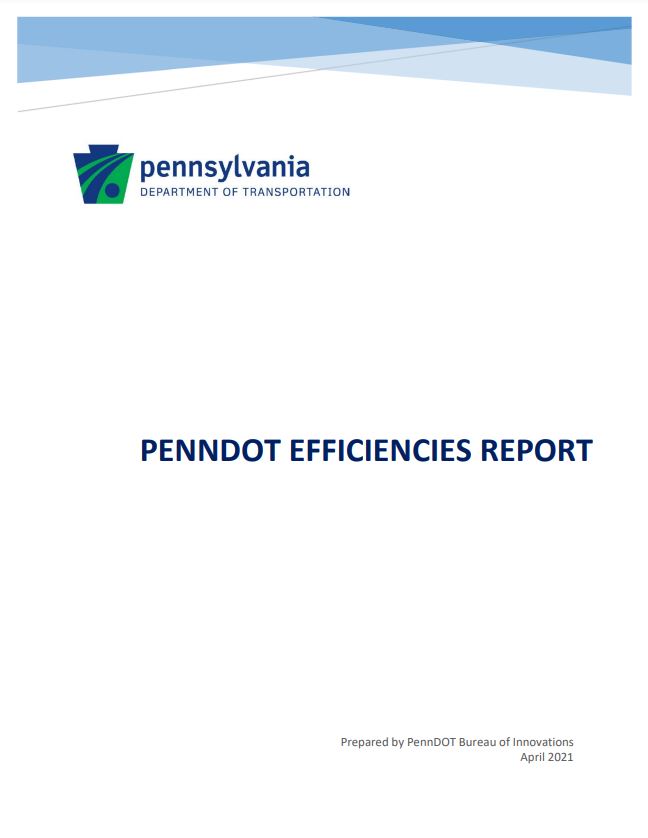PennDOT Pathways
This page is best viewed in Chrome, Edge or Firefox.
Transportation Funding
Funding for a Secure Tomorrow
PennDOT Pathways identifies, explores and implements alternative sources of funding to ensure a safe, reliable and equitable transportation system in Pennsylvania for years to come.
Approximately 75% of funding for Pennsylvania's aging transportation system comes from the gas tax — a funding concept that is more than 100 years old. With advances in fuel efficiency and the increased popularity of hybrid and electric vehicles (EVs), state transportation revenue is trending downward and is expected to continue to do so.
And it is not just EVs. In the past few years, travel patterns and habits have changed dramatically relative to telecommuting, unemployment, online shopping and technology advances in general. As gas usage declines, gas tax revenue will decrease as well, further challenging our ability to maintain the critical components of our state's transportation infrastructure. Additionally, PennDOT is committed to phasing out the state gas tax.
With the third-highest number of state-maintained bridges and fifth-largest state-maintained roadway network, the need to find innovative, reliable and equitable transportation funding solutions is crucial for Pennsylvania!
PennDOT Pathways is addressing that need.

Click on the image above for a more visual view of Pathways and a lot of other alternative funding details.
Finding the Right Path Forward
PennDOT Pathways began with an Alternative Funding Planning and Environmental Linkages (PEL) study, that was released for public comment in April 2021 and finalized with concurrence from the Federal Highway Administration in September 2021. The PEL study identified near-, mid- and long-term funding options and established a methodology for their evaluation.
The potential solutions identified in the PEL study include:
- Mileage-Based User Fee/Road-User Fee
- Managed Lanes
- Congestion Pricing
- Corridor Tolling
- Fees and Taxes
- Bridge Tolling
PennDOT is currently studying and evaluating these potential solutions and others, as well as engaging the public in the discussion, as we search together to find and implement alternative sources of funding to phase out the state gas tax and keep our transportation system safe and reliable for all.
How Did We Get Here?
Many of Pennsylvania's highways and bridges need to be replaced or rehabilitated, and they must be continually maintained. As of 2022, 2,400 state-maintained bridges were rated in poor condition. The average bridge age is 50 years, and with a typical life span of approximately 75 years, this need is not going away anytime soon. Repairs to our aging transportation system are critical to maintain safety, our economy and quality of life, but making these repairs has often come at the expense of other important regional projects.
Where do we get our current bridge and highway funding?
As you can see from the pie chart below, PennDOT gets roughly 75 percent of its funding from the federal and state gas taxes. With the rise in popularity of EVs and other cultural shifts mentioned above, we need alternative funding solutions.
It is time for new, alternative funding solutions.
In 2019, the Transportation Advisory Committee (TAC) produced a report that identified six major risks to our funding. The largest two, at the time, were federal funding and gas tax. And now, after a global pandemic, we have new challenges that change the way people use our aging transportation system.
The bottom line is that our current and future funding is at risk for three main reasons:
1

Lower Revenue from the Gas Tax
More people using less gas means lower revenue from both the federal and state gas tax. Vehicles are more fuel-efficient, using less gas and, in some instances, no gas at all (EVs).
2

Changes in Travel Behavior
Travel patterns and behavior have changed since the pandemic relative to telecommuting, delivery services, online shopping and other reasons why we use our vehicles. In fact, vehicle miles traveled dropped 40% in the spring of 2020 and while they have recovered somewhat, they remain down 15%. This may have a lasting impact on our economy, where and how we work, shop and go to school.
3

Inflation
The Federal gas tax has not been raised since 1993 — that's 30 years ago. To put this in perspective, an average cup of coffee was 75 cents then and now costs about $1.59. Inflation caused the cost of a cup of coffee go up. And it also raised the cost of construction materials. In fact, the cost of construction materials has gone up 140% over the past 30 years.
The Consequences of Doing Nothing
Basic Needs
Critical Maintenance
Basic needs of our highways and bridges must be covered first to maintain safety and meet federal requirements.
Pavement Repairs
Fixing rough roads

Traffic
Reducing traffic congestion

Reliability
Keeping bridges and highways open

Basic Needs
Critical Maintenance
Basic needs of our highways and bridges must be covered first to maintain safety and meet federal requirements.
Pavement Repairs
Fixing rough roads

Traffic
Reducing traffic congestion

Reliability
Keeping bridges and highways open

Impacts of Budget Shortfall
Impacts to PA

Delayed maintenance
Delayed maintenance leads to expensive fixes later, and a risk of closures and detours.
Lost time2
$5.8 billion in lost time and fuel costs.
Bridge closure3
One bridge closure can cost Pennsylvania drivers approximately $70,000 per day.
Impacts to the Traveling Public

More fuel & maintenance costs1
$550 per commuter lost.
Lost time, wasted fuel2
$1,100 in lost time and fuel costs per commuter.
Unpredictable detours3
$10 of fuel and vehicle costs per detour.
Impacts to Freight Mobility

Weight restrictions
NHS bridges may need to be posted with weight restrictions requiring detours that increase truck travel time and costs.
Truck bottlenecks
Pennsylvania has six of the top 100 "truck bottlenecks" in the United States — raising costs of goods and services.
Additional costs4
Costs truck drivers an additional 14.2 million hours per year.
The budget shortfall impacts everyone — individuals like you, businesses across Pennsylvania, and the goods and services on which we rely.
These reduced funds, combined with federal performance requirements, mean we've had to shift funding from other regional projects to maintain safety, overall pavement and bridge conditions on the Interstates.
- Based on the difference in vehicle maintenance costs for commuter driving an average distance of 30 miles per day to work (roundtrip) on smooth versus on poor quality pavement.
- Based on congestion in PA urban areas, and monetized using national value of time rates, and average state fuel prices.
- Calculated based on average detour length of 9.8 miles, average speed of 55 mph, and AADT for PA bridges.
- Calculated by the Texas A&M Transportation Institute in the Urban Mobility Report 2019
Efficiencies and Past State Legislative Actions
Over five years, PennDOT saved nearly $100 million by instituting organizational efficiency practices, like $38.5 million saved by using lower-cost materials for secondary roads and $10 million saved by implementing efficiency improvements identified by PennDOT employees. PennDOT's 2021 Efficiencies Report provides 88 other examples of improvements while streamlining costs.
However, the transportation funding challenge we face due to various market-driven forces are beyond what organizational efficiencies can achieve. It takes teamwork, partnerships and innovative thinking. That is what sparked the creation of PennDOT Pathways, a statewide program to identify, assess and implement reliable and equitable alternative funding solutions for our aging transportation system, and a critical component of PennDOT's commitment to phase out the state gas tax.
This progress builds on past legislative actions — such as Act 89 of 2013 and Act 44 of 2007 — that made significant investments possible across the state and in all modes. Partial funding for Act 89 was derived from the elimination of the flat 12 cent gas tax and modernizing an outdated transportation financing structure through the uncapping of the wholesale, Oil Company Franchise Tax. The act also increased resources for transit and created a dedicated Multimodal Fund for non-highway modes' capital needs.
The plan was summarized in a Transportation Funding Plan Summary (PDF) created when the law was passed. The projects made possible or in development because of the plan were displayed for years after the law's passage on the department's Projects website.
The plan was based on many recommendations from the then Transportation Funding Advisory Commission. The commission's recommendations are outlined in a Final Report (PDF) and the department has implemented many of the recommendations.
Source: Transportation Revenue Options Commission Report, August 2021 (PDF)
